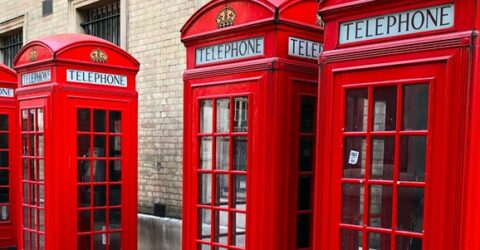Why is BT still the UK’s biggest broadband provider?
The UK's biggest ISP was its only telecommunications company before competition arrived in the 1980s.

The relative merits of nationalised and privatised industry have been the source of fierce arguments for decades.
While Thames Water and Arriva continue to undermine public faith in franchising, some nationalised British industries were themselves guilty of immense inefficiencies and incompetence.
In some sectors, privatisation has unlocked tangible benefits, reflected in healthy competition among utility companies and within our telecommunications sector.
Although privatisation predated the World Wide Web, telecommunications in the UK was once a closed shop, handled by a single nationalised agency.
However, it was decided in 1980 that the Post Office was no longer best placed to maintain the nation’s phone lines.
A new company was set up to manage landlines. However, British Telecom enjoyed just four years of exclusivity before Mercury Communications introduced a domestic landline service in 1984.
In a portent of what was to come, Mercury customers used existing BT infrastructure rather than Mercury’s own hardware.
Forty years later, surprisingly little has changed…
One line, many providers
Back in the Eighties, Mercury customers had to dial 131 and then enter a ten-digit account number before dialling the phone number they wished to call.
That took some time on a traditional dial phone.
Today, accessing another ISP’s service across BT’s infrastructure and hardware as simple as signing up and installing a supplied router.
Nonetheless, the principles of multiple providers accessing a single national network remain broadly similar.
BT’s post-2006 offshoot Openreach installs and maintains a vast network of phone line exchanges and connections into private dwellings up and down the land.
BT itself focuses on consumer and commercial telecommunications services. It’s also customer-facing (unlike Openreach, which is notoriously difficult to contact).
Your chosen ISP handles connectivity across Openreach’s network, on the basis that no private company could afford to build or maintain comparable national infrastructure.
Indeed, BT only managed to reach every farmhouse, bothy and cottage thanks to its monopoly holder status – and huge investment from the public purse.
Although Openreach is technically an independent company, it remains part of the BT empire.
BT itself is still the UK’s biggest ISP, hosting an estimated 25 per cent of home broadband connections and almost 40 per cent of domestic landlines.
Its share of the broadband market places it ahead of its nearest competitors Sky (21 per cent) and Virgin Media (17 per cent).
Sky relies on Openreach infrastructure, but Virgin’s subterranean network of full fibre cabling now extends to 53 per cent of UK homes.
Many regional companies now offer broadband over proprietary networks installed to compete with Openreach infrastructure, including Grain, CityFibre and KCOM.
An obvious choice?
Openreach’s own cabling network extends across more than 120 million miles, and your home will almost certainly contain a Openreach socket (potentially with a BT logo).
There’s undeniable logic in signing up to broadband from the sister organisation of the UK’s primary infrastructure giant, since the two firms should cooperate if any issues arise.
Many older consumers still regard BT as the default telecommunications service provider – a trusted name as newer broadband firms rebrand or get taken over.
However, even the one-time monopoly holder is rebranding.
EE is becoming the primary consumer brand for BT, following the latter’s 2016 takeover of the former.
Given the levels of competition in this industry, it’s probably inevitable that BT will cease to be the UK’s biggest ISP – but it remains the market leader for now.






